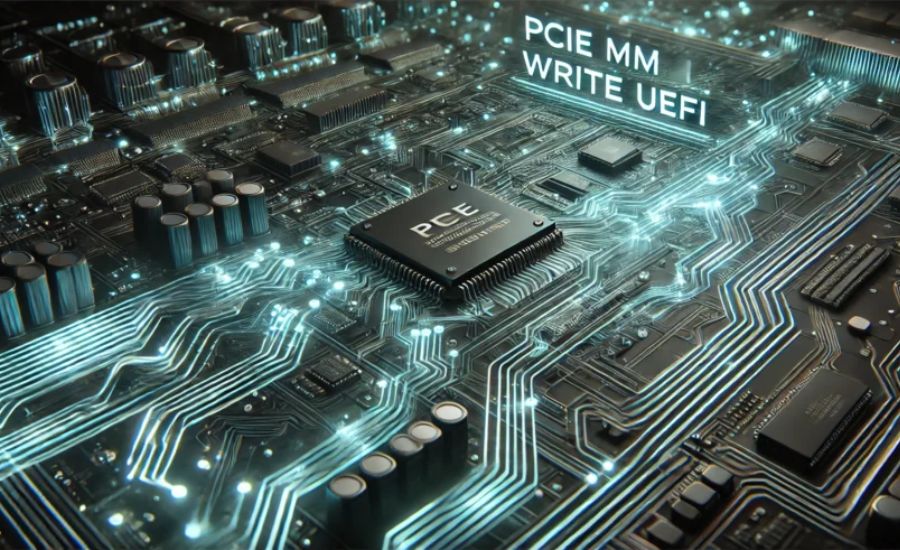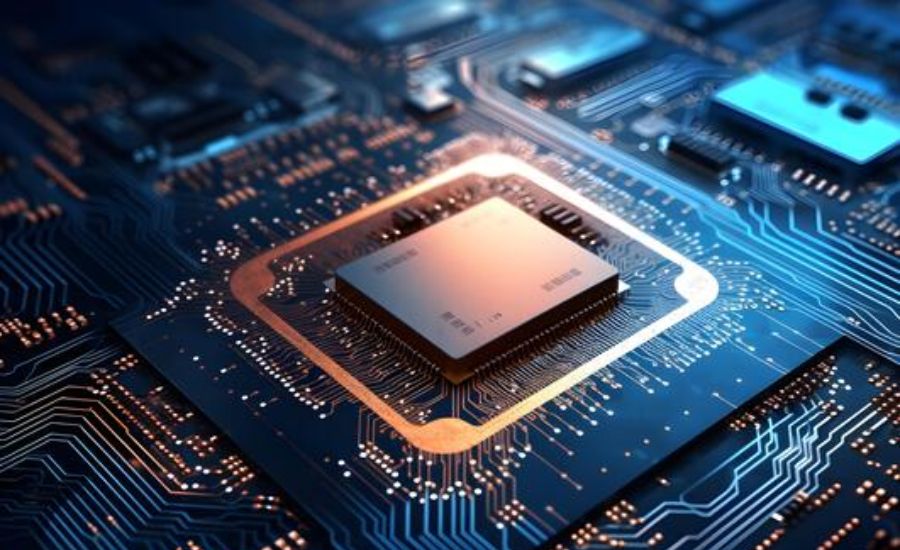What is PCIe MM Write UEFI and Why It’s Important for Developers?
PCIe MM Write UEFI is a technique used by developers to write data directly to the memory of PCIe devices like graphics cards, network adapters, and storage controllers. This happens in the UEFI (Unified Extensible Firmware Interface) environment before the operating system takes over. It allows for low-level hardware configuration, diagnostics, and system initialization. For developers, understanding how to perform PCIe MM Write UEFI operations is essential because it offers direct control over hardware components, ensuring smoother and more reliable system performance.
The process is especially useful for custom firmware development, where developers need to configure specific settings of a device without waiting for the operating system. By interacting with a device’s memory, developers can make sure the hardware is working as intended. This capability is also useful when troubleshooting hardware issues, as it lets you send test data or access device settings directly.
Understanding PCIe MM Write UEFI is crucial for creating systems that work seamlessly. By using this technique, developers have the power to control hardware at a deeper level than standard BIOS allows. It helps in optimizing performance, improving system stability, and ensuring that hardware behaves as expected during the boot process. This control is necessary for building systems that are reliable and efficient.
How PCIe MM Write UEFI Simplifies Low-Level Device Control
Low-level device control is a complex task, but PCIe MM Write UEFI makes it easier by allowing direct interaction with a device’s memory. Instead of relying on the operating system to handle hardware, developers can communicate with devices at a deeper level in the boot process. This enables better configuration, as well as enhanced performance, since the hardware is ready to operate as soon as the system starts.
When a device is powered on, UEFI can map the device’s memory into the CPU’s accessible space. From here, developers can write directly to the memory registers of the PCIe device. This direct approach helps reduce the time needed for hardware to be fully operational and can significantly improve boot times. Additionally, it ensures that devices like storage controllers or network cards are properly configured before the operating system even begins to load.
The process also supports more advanced hardware features, such as custom device configurations. This is especially important for high-performance systems that require specific settings for optimal operation. The flexibility that PCIe MM Write UEFI offers allows developers to make adjustments to hardware on a case-by-case basis, improving the overall efficiency of the system.
A Step-by-Step Guide to Performing PCIe MM Write UEFI Operations
Performing PCIe MM Write operations in UEFI involves several key steps. First, it’s necessary to locate the PCIe device within the system. Using UEFI’s built-in functions, developers can find the device based on its bus, device, and function numbers. This is the starting point for any interaction with the device.
The next step is identifying the device’s Base Address Registers (BARs). These BARs specify the memory areas that the PCIe device is allowed to access. Once you’ve located these regions, you can map them into the system’s address space. This mapping allows the CPU to interact directly with the device’s memory.
After the memory is mapped, the next step is to write data to the device’s memory. This is where you can configure specific settings, like enabling features or setting control values. It’s important to ensure the write operation follows the device’s requirements, such as alignment and data width, to avoid errors.
Finally, developers must follow any alignment rules and access guidelines. Some devices require certain memory access conditions, like specific byte alignments, for proper operation. Adhering to these requirements is crucial to ensure the write operation completes successfully.
Security Best Practices for PCIe MM Write UEFI Operations
Since PCIe MM Write UEFI operations occur before the operating system loads, it’s essential to consider security to prevent unauthorized access. Allowing any program or user to write to PCIe device memory could lead to serious vulnerabilities. For this reason, it’s important to protect these operations by using secure coding practices and enabling protections like Secure Boot.
One of the best ways to ensure security during PCIe MM Write operations is by validating memory addresses before writing data. Ensuring that the addresses you are accessing are within the valid ranges for the PCIe device will prevent accidental writes to unauthorized areas. This helps maintain the stability and integrity of the system.
Another practice to improve security is performing regular code audits for custom UEFI applications. Custom firmware or drivers that perform PCIe MM Write operations should be carefully reviewed to identify potential vulnerabilities. This is especially important since malicious code could exploit these low-level write operations to cause harm to the system.
Read Next: Dark Hero Asus Bios 1302
Avoiding Common Mistakes: PCIe MM Write UEFI Troubleshooting Tips
When working with PCIe MM Write UEFI, there are common mistakes that can lead to errors or unstable system behavior. In this section, we’ll explore troubleshooting tips to help you avoid these pitfalls and ensure smooth operations when writing to PCIe device memory.
How PCIe MM Write UEFI Helps in Custom Firmware Development
PCIe MM Write UEFI offers immense benefits for custom firmware development. In this section, we’ll explore how using PCIe memory-mapped I/O in UEFI simplifies the process of configuring devices and ensures your custom firmware interacts seamlessly with hardware components.

PCIe MM Write UEFI vs. Traditional BIOS Methods: Key Differences
The process of PCIe MM Write UEFI differs from traditional BIOS methods in several key ways. Here, we’ll break down the differences, exploring how UEFI provides more flexibility and control over PCIe devices, making it a more powerful tool for developers.
Unlocking Firmware Updates with PCIe MM Write UEFI: A Game Changer for System Admins
With PCIe MM Write UEFI, system administrators can unlock new potential for firmware updates. This section will cover how this technique makes updating device firmware easier and more efficient, offering a major advantage for system maintenance and performance optimization.
Conclusion
In conclusion, PCIe MM Write UEFI is a powerful tool for developers and system administrators, allowing them to control and configure PCIe devices directly at a low level. It helps with tasks like device initialization, custom firmware development, and even troubleshooting. By understanding and using PCIe MM Write UEFI, you can ensure your system’s hardware works properly and efficiently from the moment it starts up.
For system administrators, PCIe MM Write UEFI can make firmware updates and hardware configurations much easier. It’s an essential skill for anyone working with modern computers, as it allows for better performance and quicker troubleshooting. With this knowledge, you can build and maintain systems that run smoothly and are ready for anything.
Faqs
Q: What is PCIe MM Write UEFI?
A: PCIe MM Write UEFI refers to the process of writing data directly to a PCIe device’s memory through UEFI firmware before the operating system loads. It helps configure devices and ensure they function properly.
Q: How does PCIe MM Write work in UEFI?
A: PCIe MM Write works by mapping the PCIe device’s memory into the CPU’s addressable space. UEFI then writes data to the device’s registers to configure or control it.
Q: Why is PCIe MM Write UEFI important for developers?
A: It allows developers to directly interact with hardware at a low level, configure devices, and perform diagnostics before the OS starts, making it crucial for firmware development and troubleshooting.
Q: Can PCIe MM Write be used for firmware updates?
A: Yes, PCIe MM Write UEFI is used to write new firmware directly to the device’s memory, enabling quick and efficient firmware updates without the OS.
Q: What are BARs in PCIe devices?
A: BARs (Base Address Registers) define the memory regions of a PCIe device. These regions are mapped to the system’s memory, allowing UEFI to read and write to them.
Q: Is PCIe MM Write UEFI secure?
A: PCIe MM Write UEFI can be secure if proper safeguards, like Secure Boot and address validation, are implemented to prevent unauthorized access and system instability.
Q: Can PCIe MM Write UEFI improve system performance?
A: Yes, by configuring devices early in the boot process and enabling hardware features, PCIe MM Write UEFI can improve boot times, device readiness, and overall system performance.
You May Also Like: Us Now A Days










